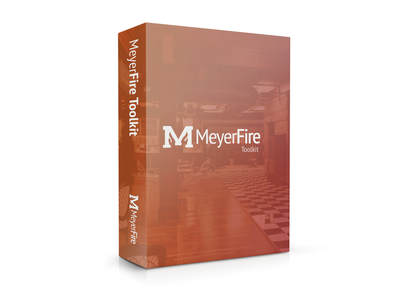|
Does a security grill utilized in school corridors required to be tied into the fire alarm?
If so, the concept should be that the grill in the closed position should return to the open position when fire alarm is activated, correct? Sent in anonymously for discussion. Click Title to View | Submit Your Question | Subscribe
7 Comments
Glenn Berger
5/13/2024 08:14:54 am
The easy answer to this question would be yes. However, the right answer would be dependent on the school's emergency operation procedures. Construction type and layout would also play a factor.
Reply
Todd E Wyatt
5/13/2024 08:16:22 am
Security grilles (SG) are permitted in the Means of Egress (ME) per the scoping Code (IBC-2021) but are limited to 50% of the Exit Access doorways and/or Exit doorways. SG are permitted at the main exits in Group B, F, M and S Occupancy Classifications (OC) but not at Group E Education OC.
Reply
Todd E Wyatt
5/13/2024 08:23:08 am
Additional info from NFPA 72 National Fire Alarm and Signaling Code :
Reply
Ricardo Gonzales Jr
5/13/2024 08:17:57 am
It depends. What is the Security Grill for? Does it affect egress or not. The Architect or Life Safety Engineer should be able define that for you. As a Fire Alarm designer, you should ask the questions and get them to provide the answer. It's their job to know egress and it's a CYA for you. Documented from the Architect or Engineer.
Reply
Chad
5/13/2024 10:10:24 am
What Ricardo said, 100%
Reply
Steve Cooper
5/13/2024 09:40:36 am
I believe you would want all security features tied together. It could be wired or arranged separately depending on how the schools set up their emergencies.
Reply
Jack G
5/13/2024 09:43:48 am
I believe that the school districts liability comes into play and that they should open in the flow of the egress routes
Reply
Leave a Reply. |
ALL-ACCESSSUBSCRIBESubscribe and learn something new each day:
COMMUNITYTop June '24 Contributors
YOUR POSTPE EXAMGet 100 Days of Free Sample Questions right to you!
FILTERS
All
ARCHIVES
July 2024
PE PREP SERIES |
MeyerFire
- Blog
- Forum
-
THE TOOLKIT
- SUBMIT AN IDEA
- BACKFLOW DATABASE*
- CLEAN AGENT ESTIMATOR*
- CLOUD CEILING CALCULATOR
- DOMESTIC DEMAND*
- FIRE FLOW CALCULATOR*
- FIRE PUMP ANALYZER*
- FIRE PUMP DATABASE*
- FRICTION LOSS CALCULATOR
- HANGER SPACER*
- IBC TRANSLATOR*
- K-FACTOR SELECTOR*
- NFPA 13 EDITION TRANSLATOR ('19 ONLY)
- NFPA 13 EDITION TRANSLATOR ('99-'22)*
- LIQUIDS ANALYZER*
- OBSTRUCTION CALCULATOR
- OBSTRUCTIONS AGAINST WALL*
- PITOT CONVERTER
- PLUMBING FIXTURE COUNTS
- QUICK RESPONSE AREA REDUCTION
- REMOTE AREA ANALYZER*
- SPRINKLER DATABASE*
- SPRINKLER FLOW*
- SYSTEM ESTIMATOR*
- TEST & DRAIN CALCULATOR
- THRUST BLOCK CALCULATOR
- TRAPEZE CALCULATOR
- UNIT CONVERTER
- VOLUME & COMPRESSOR CALCULATOR
- WATER STORAGE*
- WATER SUPPLY (US)
- WATER SUPPLY (METRIC)
- UNIVERSITY
- PE Exam
- LOGIN
- PRICING
- OUR CAUSE

MeyerFire.com is a startup community built to help fire protection professionals shine.
Our goal is to improve fire protection practices worldwide. We promote the industry by creating helpful tools and resources, and by bringing together industry professionals to share their expertise.
MeyerFire, LLC is a NICET Recognized Training Provider and International Code Council Preferred Education Provider.
All text, images, and media Copyright © 2016-2024 MeyerFire, LLC
We respect your privacy and personal data. See our Privacy Policy and Terms of Service. The views, opinions, and information found on this site represent solely the author and do not represent the opinions of any other party, nor does the presented material assume responsibility for its use. Fire protection and life safety systems constitute a critical component for public health and safety and you should consult with a licensed professional for proper design and code adherence.
Discussions are solely for the purpose of peer review and the exchange of ideas. All comments are reviewed. Comments which do not contribute, are not relevant, are spam, or are disrespectful in nature may be removed. Information presented and opinions expressed should not be relied upon as a replacement for consulting services. Some (not all) outbound links on this website, such as Amazon links, are affiliate-based where we receive a small commission for orders placed elsewhere.













 RSS Feed
RSS Feed
